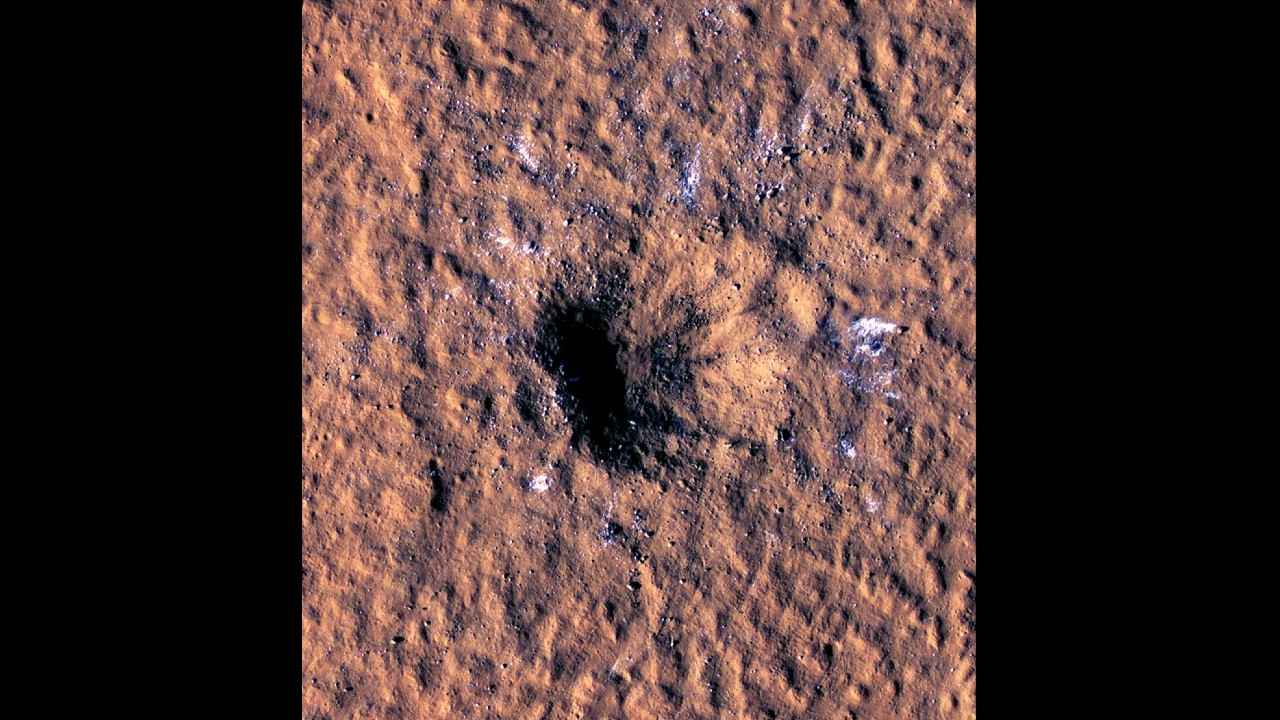NASA’s Mars lander captures stunning meteoroid impact, spots more ice

New York, Oct 28 (IANS) NASA's InSight lander has captured a stunning meteoroid impact on Mars that occurred last year, the largest to date observed on the Red Planet, and boulder-size blocks of water ice can be seen around the rim of an impact crater.
The Mars lander recorded a magnitude 4 marsquake last December, but scientists learned only later the cause of that quake — a meteoroid strike estimated to be one of the biggest seen on Mars since NASA began exploring the cosmos.
The meteoroid is estimated to have spanned 16 to 39 feet (5 to 12 metres), small enough that it would have burned up in Earth's atmosphere, but not in Mars' thin atmosphere, which is just 1 per cent as dense as our planet's.
The impact, in a region called Amazonis Planitia, blasted a crater roughly 492 feet (150 metres) across and 70 feet (21 metres) deep. Some of the ejecta thrown by the impact flew as far as 37 km away.
"It's unprecedented to find a fresh impact of this size. It's an exciting moment in geologic history, and we got to witness it," said Ingrid Daubar of Brown University.
The event and its effects are detailed in two papers published in the journal Science.
With images and seismic data documenting the event, this is believed to be one of the largest craters ever witnessed forming any place in the solar system.
Many larger craters exist on the Red Planet, but they are significantly older and predate any Mars mission.
InSight has seen its power drastically decline in recent months due to dust settling on its solar panels.
The spacecraft now is expected to shut down within the next six weeks, bringing the mission's science to an end.
Since landing in November 2018, InSight has detected 1,318 marsquakes, including several caused by smaller meteoroid impacts.
But the quake resulting from last December's impact was the first observed to have surface waves — a kind of seismic wave that ripples along the top of a planet's crust, said NASA.
"The image of the impact was unlike any I had seen before, with the massive crater, the exposed ice, and the dramatic blast zone preserved in the Martian dust," said Liliya Posiolova, who leads the Orbital Science and Operations Group at Malin Space Science Systems (MSSS).
(Except for the headline and cover image, the rest of this IANS article is un-edited)
For more technology news, product reviews, sci-tech features and updates, keep reading Digit.in.
IANS English
This is an unedited, unformatted feed from the Indo-Asian News Service (IANS) wire. View Full Profile




